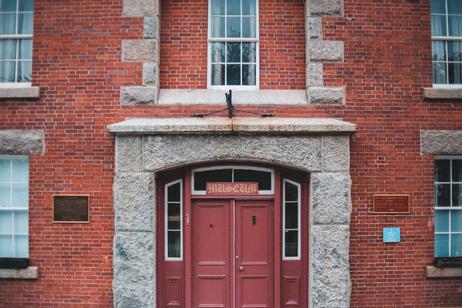For many months, the District of Columbia Public Schools has been weighing a reorganization plan that would include the closure of some historic schools in the district. Feedback was gathered from parents, students, community members, and other stakeholders in the closure plan. Local neighborhoods came together to save their schools, while school officials pushed for money-saving ideas to save the beleaguered district from more budget woes. As one of the largest school districts in the country, other districts have been watching the ongoing negotiations in D.C. with significant interest.
Strong Reaction to Original Plan
According to the District of Columbia Public Schools website, the original school closure plan announced in November was met with responses from numerous members of the D.C. community.
“The proposal we put out in early November evoked strong reactions from the community,” DCPS Chancellor Kaya Henderson stated on the district website. “We heard from people across the city that have never reached out or offered feedback before. People spoke up at meetings, they sent emails, they called, and we made sure to track everything they said.”
This video illustrates the strong community reaction to school closing.
Henderson added that she and her staff were “inspired and encouraged” by the feedback they received from parents, students, school staff, and community members. The district encouraged input by hosting four community meetings and meeting with education committees in three district wards. Information was also collected during office hours and on the district website. The feedback was used in crafting the revised plan, according to DCPS officials.
While DCPS depicts the information-gathering process positively, other sources portray the meetings somewhat differently. CBS DC reports that the past two months have seen sometimes heated meetings between district officials, parents, and community members. The Washington Teachers Union has also gotten in on the act, opposing school closures and working to find new opportunities for teachers that the closures might impact.
New Plan Revealed
After two months of hearing input from various members of the D.C. community, DCPS revealed a new plan that involved fewer school closures than were originally announced. According to the Examiner, the new plan involves closing 13 neighborhood schools at the end of the 2012-2013 school year and another two schools at the end of the following school year. The new plan saves five schools that were previously on the chopping block, although one of those schools will be merged with another school that will put elementary students in the same building as middle and high school students.
The DCPS website states that the new plan is a culmination of the feedback the district received. Throughout the two months of interacting with the community, the district learned there were primary principles that must be maintained throughout D.C. schools, including:
- Schools that offer students similar opportunities through solid programs
- Better use of resources to ensure support for the local community
- Safety for students within the schools and as they travel from home to school and back again
District officials assert that the final school closure plan accurately reflects these themes. The district website urges all involved in the public school process to unite and work toward the effective education of all D.C. students. However, that noble goal may be easier said than done since many in the DCPS system are unsatisfied with the final closure proposal.
This video offers another take on the parental reaction to school closings.
Schools Facing Closure
The DCPS schools that will be closed at the end of the current school year and consolidated into other schools include:
- MacFarland Middle School
- Marshall Elementary School
- CHOICE at Hamilton
- Spingarn STAY High School
- Shaw Middle School at Garnet-Patterson
- Prospect Learning Center
- Davis Elementary School
- Kenilworth Elementary School
- Winston Education Campus
- Ron Brown
- Ferebee-Hope Elementary School
- MC Terrell-McGogney Elementary School
The additional two schools to be closed at the end of the following school year are Mamie D. Lee and Sharpe Health. Schools that were saved from closure include Garrison Elementary School, Smothers Elementary School, Malcolm X Elementary School, and Johnson Middle School. Francis-Stevens School will remain open under the new plan but will be merged with the School without Walls.
Opposition to the New Plan
The new plan has been met with more acceptance than the original one, particularly in light of the time spent collecting input from many different sources before the final decision on school closures. However, the plan is far from perfect, and disappointment and concern are still in the hearts of many involved with DCPS. More than 2,000 students will be displaced by the new plan, which adds to the concern of parents and students.
One of the biggest impacts will be felt with the closure of Spingarn High School, which is currently home to more than 400 students. Parents and students were disappointed to hear of the closing of their area school.
In this video, D.C. Public Schools Chancellor Kaya Henderson explained the proposed school closings at the time.
“Overall, I think it’s a pretty good school, I do,” Spingarn parent Tonya Hannah told CBS DC. “As far as the teaching and keeping up with the students, and the staff keeping up with the parents, they’ve been great.”
The teachers’ union is also opposed to the school closures but will now take steps to minimize the impact on teachers and students. Washington Teachers Union president Nathan Saunders stated at the Examiner that the union has been working hard to influence stakeholders as the new plan was ironed out. The union will also contact teachers and support personnel affected by the closures.
Questions? Contact us on Facebook. @publicschoolreview















